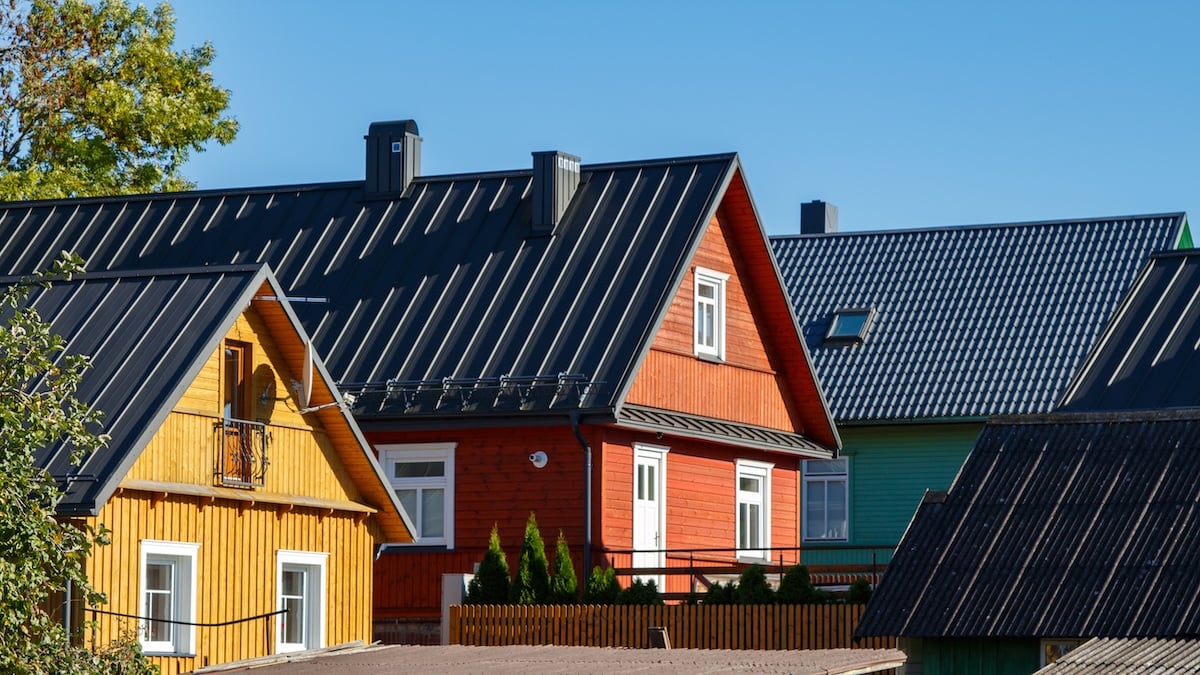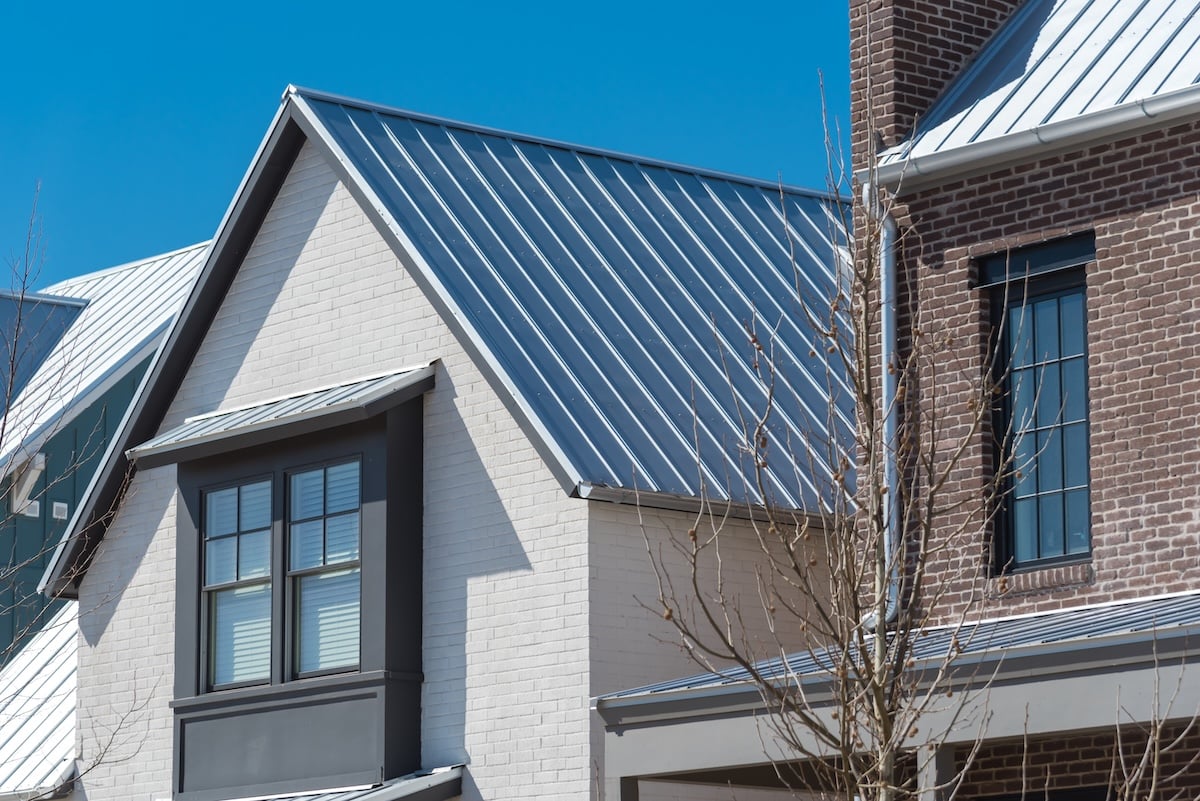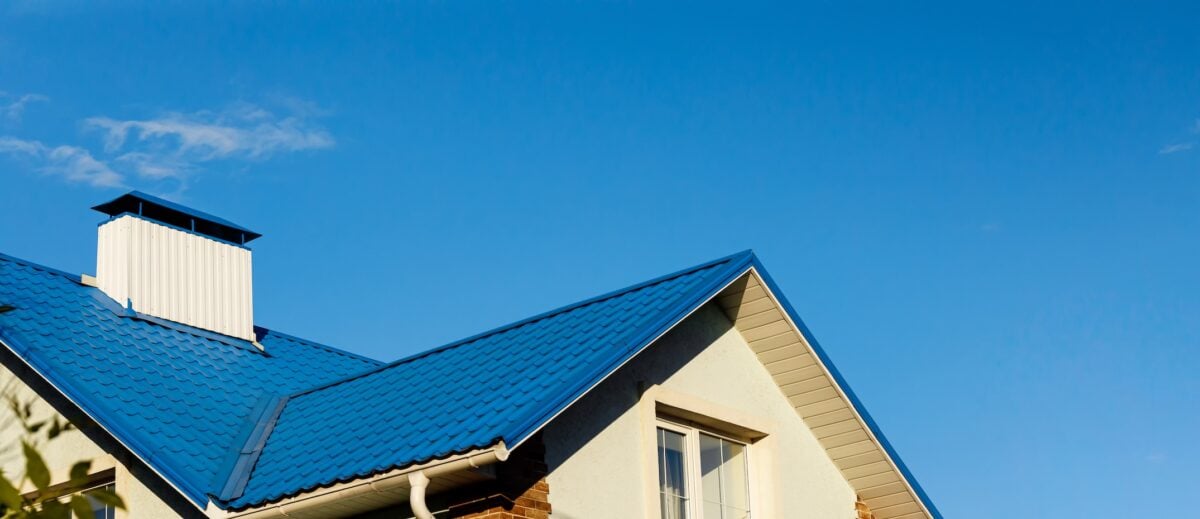Choosing the right metal roof and siding color combinations can transform your home’s exterior from ordinary to extraordinary. The key lies in understanding how different hues work together to create visual harmony while reflecting your personal style and enhancing your home’s architectural features.
A great design, however, isn’t just about color; it’s about the quality and durability of the materials themselves. Selecting a top-notch metal roof and a durable siding is the foundation for a home that is both beautiful and built to last.
This comprehensive guide explores proven color combinations that deliver stunning curb appeal, practical considerations for your specific climate and home style, and expert tips to help you make confident decisions. You’ll discover:
- Classic combinations that never go out of style
- Bold modern pairings for contemporary homes
- How to work with your home’s existing features
- Professional installation insights
🧠 Understanding Color Theory for Exterior Design

Color theory plays a crucial role in creating appealing metal roof and siding combinations. Understanding how colors interact helps you achieve the perfect balance between visual interest and cohesive design.
The Role of Contrast
- Contrast adds visual depth and prevents your home from looking flat or monotonous.
- High contrast combinations (e.g., dark charcoal roof with light gray siding) create dramatic, eye-catching results.
- Low contrast pairings provide subtle elegance and timeless appeal.
- Traditional homes often benefit from moderate contrast.
- Modern designs can handle more dramatic differences.
Complementary vs. Analogous Colors
- Complementary colors:
- Opposite each other on the color wheel.
- Create vibrant, dynamic combinations (e.g., deep forest green roof with warm terracotta siding).
- Perfect for homes with bold architectural features.
- Analogous colors:
- Neighbors on the color wheel.
- Create harmonious, soothing combinations (e.g., shades of blue-gray or warm earth tones).
- Feel naturally cohesive and suit most home styles.
Choosing your exterior color palette is one of the most critical decisions in a new construction project, but it’s just one of two fundamental steps. The other is a professional siding installation and when it should be done. While your color choice sets the tone, a high-quality installation is what brings that aesthetic to life and ensures its longevity. Both are foundational steps that, when done correctly, guarantee a cohesive, professional, and lasting result you will be proud of for years to come.
💡 7 Professional Tips for Choosing Your Perfect Combination

Choosing the right combination is crucial for achieving a polished and professional look that reflects your personal style. These seven tips will help you make confident decisions and avoid common mistakes.
1. Define Your Purpose
Before making any decisions, it’s crucial to identify the purpose behind your choices. Are you aiming for functionality, aesthetics, or a balance of both? Pinpointing your priorities will help guide your approach. For instance, if you’re designing a workspace, ergonomics and efficiency should take precedence to create a productive environment. On the other hand, if you’re working on a cozy living room, comfort and visual appeal might become the focus. Clearly understanding your goals ensures that every decision you make contributes toward fulfilling that purpose. Without a clear purpose, it’s easy to get overwhelmed by endless options.
2. Understand Your Style
Defining your style is key to making choices that reflect your personality or align with your brand. Start by exploring what appeals to you—are you drawn to clean lines and simplicity, bold and vibrant designs, or timeless, classic elements? This step is all about self-reflection or understanding your brand’s identity. Take inspiration from magazines, Pinterest boards, or even your favorite stores. Identifying your style helps narrow down options, making the decision-making process smoother. When your choices match your aesthetic, the final combination feels authentic, cohesive, and uniquely yours.
3. Consider Your Space
The environment in which your combination will exist plays a critical role in decision-making. Start by evaluating the dimensions, lighting conditions, and layout of the space. Is the area small, large, or irregularly shaped? For instance, in smaller or darker spaces, lighter colors and reflective materials can create an illusion of openness. In larger areas, you might have more freedom to play with darker tones or bold patterns. Think about how the elements will interact with the space—will the pieces fit comfortably, or will they feel cramped? Considering these factors guarantees that your choices not only look great but also function well within their surroundings.
4. Match Colors and Textures
Colors and textures can make or break the harmony of your combination, so it’s essential to get them right. Start by choosing a color palette—do you prefer complementary shades for a cohesive look, or contrasting tones for bold statements? Once your palette is set, focus on textures. Combining sleek, smooth surfaces like metal or glass with softer, tactile materials like wood or fabric can create a balanced and inviting feel. Experiment with different combinations to see how they interact, keeping in mind the mood you want to convey. For example, neutral tones and soft textures work well for calming spaces, while bright colors and bold patterns can energize a room.
5. Prioritize Quality
Quality should always be a top priority, especially when it comes to your home’s exterior. While it might be tempting to opt for cheaper options, investing in high-quality siding can save you money in the long term by avoiding frequent repairs and replacements. For your home, this means selecting durable and beautiful materials like James Hardie siding. High-quality siding ensures better finishes, sturdier construction, and colors that will resist fading and hold up against the elements. Before making a final decision, explore our guide to Hardie board siding colors to find a palette that will stand the test of time and elevate your home’s curb appeal.
6. Test Before You Decide
Whenever possible, test your choices before fully committing. Seeing how different elements look and function together in real-world settings can help you avoid costly mistakes. For instance, if you’re arranging furniture, try placing it in your space temporarily to assess how it fits and feels. If you’re painting a wall, test a small patch first to see how the color reacts to the lighting throughout the day. This hands-on approach allows you to identify potential issues and make adjustments before finalizing your decisions. Testing ensures that your combination not only looks good but also works practically in your environment.
7. Seek Expert Opinions
Sometimes, an outside perspective can make all the difference. Don’t hesitate to consult professionals, whether it’s an interior designer, stylist, or another expert in the field. Professionals bring experience and fresh ideas that can enhance your choices. Additionally, gathering feedback from friends, family, or colleagues can provide valuable insights you might have overlooked. Other perspectives can help identify potential problems or inspire creative solutions. Collaboration encourages better results, ensuring that your final combination is thoughtful, balanced, and well-executed. When in doubt, a second opinion can save you time, money, and unnecessary stress.
🛠️ Regional Considerations and Climate Factors

Your geographic location influences both aesthetic preferences and practical considerations for metal roof and siding color combinations.
Northern Climates
Cooler regions often favor warmer color palettes that feel inviting against snowy or gray winter landscapes. Deep greens, warm browns, and rich burgundies work well in these settings.
Snow load considerations may influence roof color choices, as darker colors can help with snow shedding, while lighter colors provide better summer cooling.
Southern Climates
Hot, sunny climates benefit from lighter color combinations that reflect heat and maintain comfortable interior temperatures. Light grays, beiges, and cool blues work well in these regions.
Consider how intense sun exposure affects color longevity. High-quality finishes with UV protection help maintain appearance over time.
Coastal Areas
Salt air and high humidity create unique challenges for exterior materials. Look for combinations using materials specifically designed for coastal environments.
Colors that complement water views—such as blues, greens, and sandy neutrals—work well in these settings while harmonizing with the natural environment.
👉 Transform Your Home’s Exterior with Confidence
Choosing the right metal roof and siding color combination is a big decision that can completely elevate your home’s look while enhancing its durability and value. At Maumee River Roofing, we’re here to guide you every step of the way.
While selecting the perfect aesthetic is a crucial first step, it’s only one part of the equation. The longevity and performance of your new exterior depend entirely on the quality of the installation. A professional, top-notch company ensures that your beautiful new metal roof and siding are installed with precision, adhering to the highest industry standards. Unlike a DIY approach or a less-experienced contractor, a professional team will use the correct tools, follow manufacturer guidelines, and properly address critical areas like flashing, seams, and fasteners to prevent future issues such as leaks or wind damage.
With years of experience and a commitment to quality, our team understands how to balance aesthetics, functionality, and your unique style. Let us help you create a stunning, long-lasting exterior that you’ll love for decades. Ready to get started? Contact Maumee River Roofing today for a free consultation and let’s bring your vision to life!
